Reading
Phonics
At St. Mark’s School, we begin teaching reading with a focus on phonics and we use Ruth Miskin’s Read Write Inc (RWI) programme.
RWI teaches children to read fluently and accurately as well as develop their comprehension skills. From Reception, they learn to form each letter, spell correctly and compose their ideas for writing. Reading books used in RWI are closely matched to their increasing knowledge of phonics – children are assessed every half term to ensure they are receiving the most tailored teaching and learning opportunities. As a result, our young children soon learn to share our love for reading. Parents are invited to Parent Workshops throughout the year to help you to support your child.
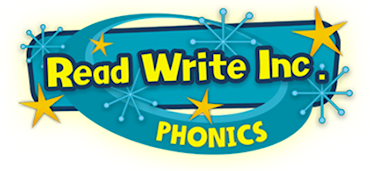
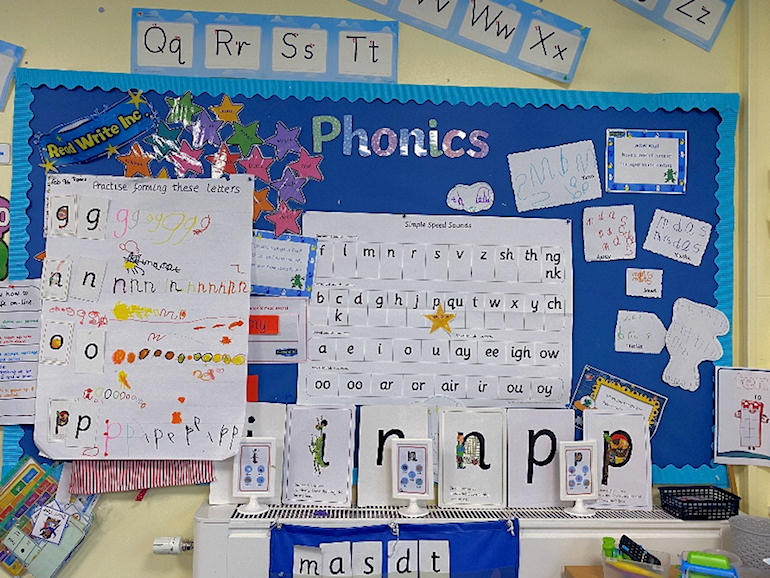
RWI display
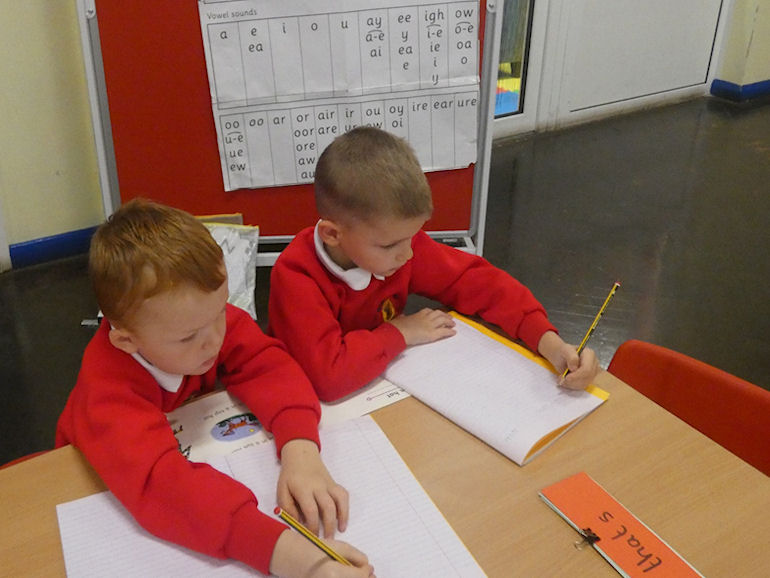
A RWI lesson in action

Writing with water
Reading
See our reading presentations made to parents to promote reading:
- Our Intent for Reading at St. Mark’s Presentation – November 2022
Reading Intent
It is our intent at St. Mark’s that EVERY child becomes a confident and fluent reader and that every child can speak accurately, confidently and with passion about books they have read.
We intend to ensure all pupils to read widely across both fiction and non-fiction to develop knowledge of themselves and the world in which they live, to establish an appreciation and love of reading, to gain knowledge across the curriculum and to develop their comprehension skills.
It is our intention to ensure that, by the end of their primary education, that all of our children will be able to read fluently, and with confidence, in any subject in their forthcoming secondary education.
Reading Vipers
At St. Mark’s children are taught the skills of reading (outlined in the National Curriculum and the KS1 and KS2 test domains) through the use of VIPERS which were created by Rob Smith (The Literacy Shed).
The Reading Vipers can be used by both KS1 and KS2 with a little adaption. The main difference being in the S.
Sequence – KS1
Summarise – KS2
In KS1, ‘Explain’; is not one of the content domains, rather it asks children why they have come to a certain conclusion, to explain their preferences, thoughts and opinions about a text.
In KS2, the Explain section covers the additional content domains of 2F, 2G and 2H which are not present in KS1.
What are Vipers?
VIPERS is an anagram to aid the recall of the 6 reading domains as part of the UK’s reading curriculum. They are the key areas which we feel children need to know and understand in order to improve their comprehension of texts.
VIPERS stands for:
The 6 domains focus on the comprehension aspect of reading and not the mechanics: decoding, fluency, prosody etc. As such, VIPERS is not a reading scheme but rather a method of ensuring that teachers ask, and students are familiar with, a range of questions. They allow the teacher to track the type of questions asked and the children’s responses to these which allows for targeted questioning afterwards.
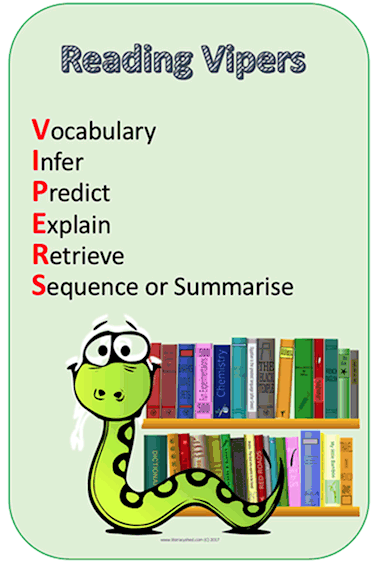
Key Stage 1
In Key Stage 1, children reading skills are taught and practised using the VIPERS during whole class reading sessions.
- 1a draw on knowledge of vocabulary to understand texts [Vocabulary]
- 1b identify/explain key aspects of fiction and non-fiction, such as characters, events, titles and information [Retrieve]
- 1c identify and explain the sequences of events in texts [Sequence]
- 1d make inferences from the text [Infer]
- 1e predict what might happen on the basis of what has been read so far [Predict]
Key Stage 2
In Key Stage 2, children reading skills are taught and practised using VIPERS during whole class reading sessions.
- 2a Give/explain the meaning of words in context [Vocabulary]
- 2b retrieve and record information/ identify key details from fiction and non/fiction [Retrieve]
- 2c summarise main ideas from more than one paragraph [Summarise]
- 2d make inferences from the text/ explain and justify inferences with evidence from the text [Infer]
- 2e predict what might happen from details stated or implied [Predict]
- 2f identify/explain how information/ narrative content is related and contributes to meaning as a whole [Explain]
- 2g identify/explain how meaning is enhanced through choice of words and phrases [Explain]
- 2h make comparisons within a text [Explain]
Read more:
More Information
At St. Mark’s we LOVE to read! Reading is at the centre of all that we do and we recognise how important reading is to support children in later life.
In every year group, we have a class text. This class text has been carefully chosen by your child’s class teacher to engage and challenge your child. These texts are read with your child as part of their reading lessons.
Here are just a few of the text that we have been studying this year:

In Reception and Key Stage 1, children are given a RML book that is matched to their reading ability and a book that they have chosen that they can share with an adult. Children are assessed half-termly to ensure they are on the correct reading band.
In Key Stage 2, children are able to visit the school’s new library two lunchtimes per week and once with the class teacher to choose a book from their given book band. They are able to take this home to read each night and they are given time in school to enjoy this book too.
Teachers in school regularly listen to children read and discuss the text with the children during 1:1 and small group reading sessions.
Our School Library
Inside the library, you will find a huge range of books to suit all different abilities and interests.
Our library is used on a regular basis by all of the children in the school.
We have a highly trained Library Team of Year 6 pupils who support children in the library and are always happy to share a book with the children. We also have class librarians, who help with the day to day running of the library and promote a love of reading in their classrooms.
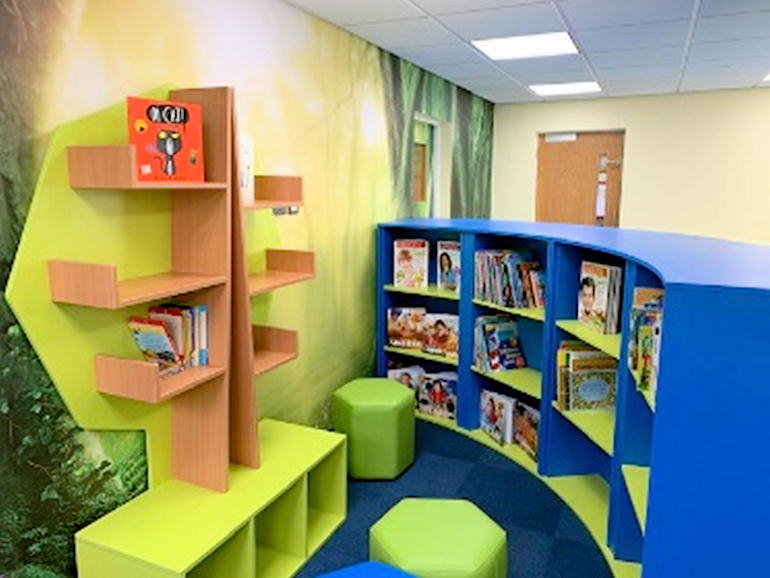
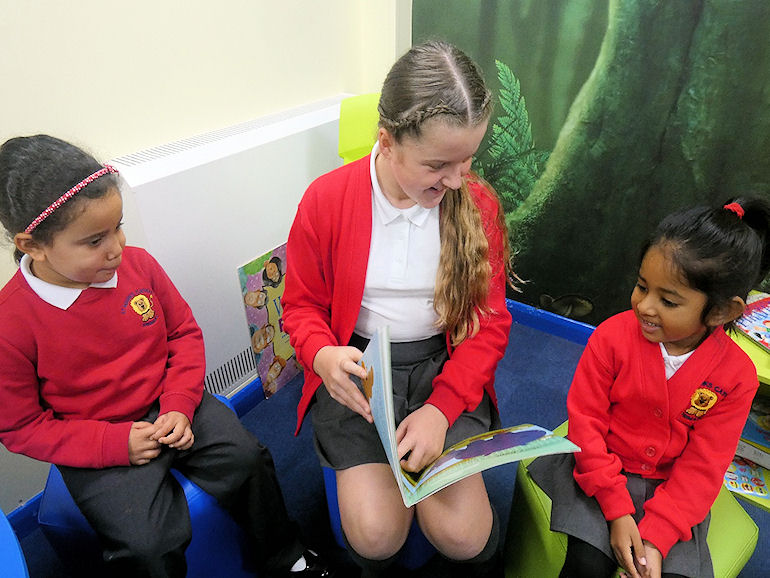
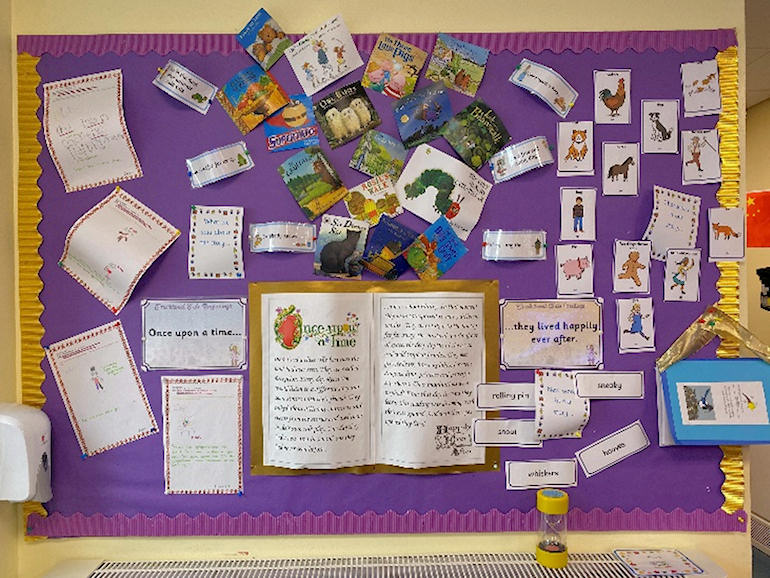
Reading Around School
Every classroom has a wide range of books that are appropriate for the reading ages of the children within the class. Also, in each class and around school, there are exciting reading displays. These displays are there to engage children with reading and also to support children during reading lessons.

